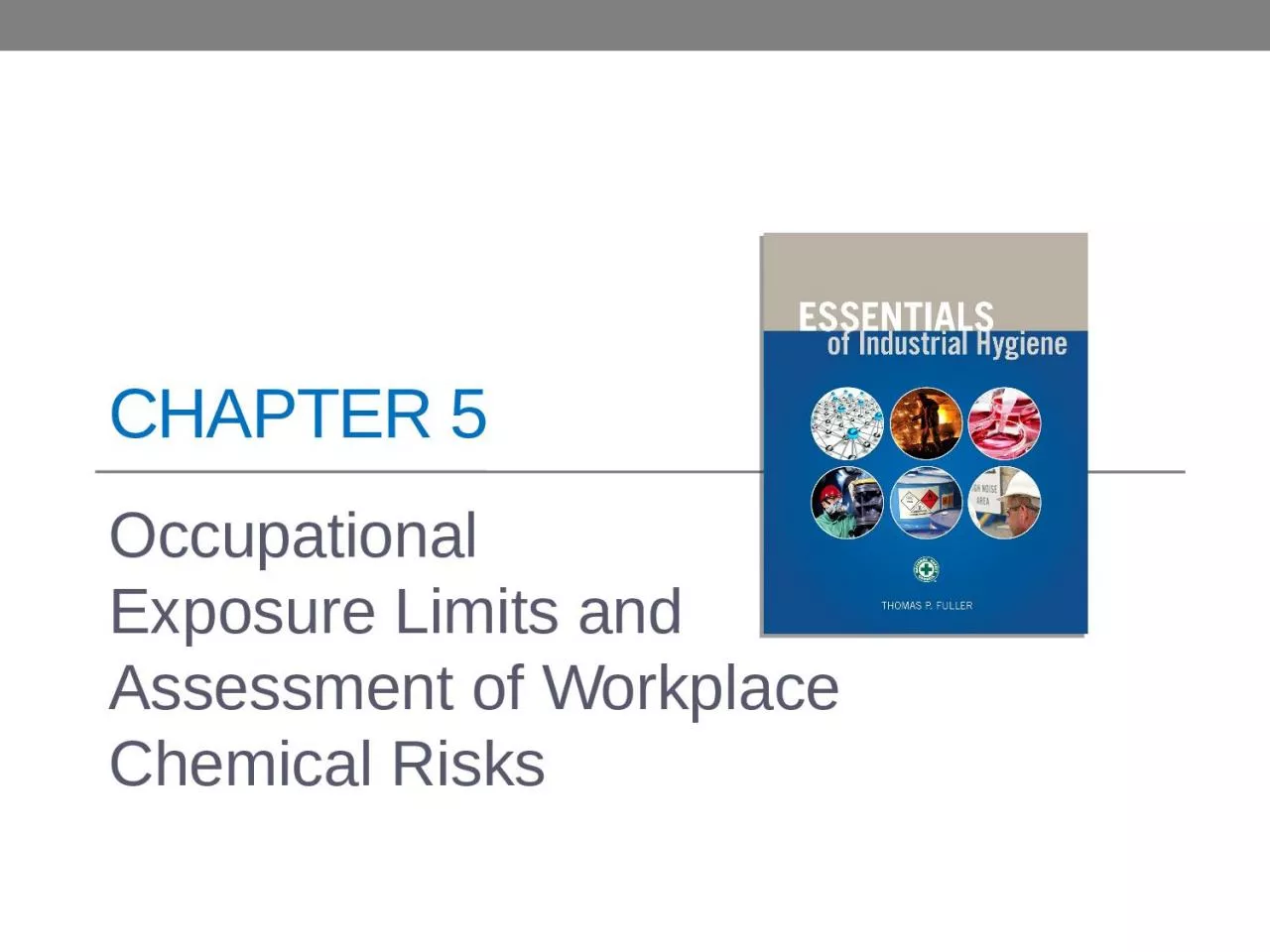

Assessment of Workplace Chemical Risks Learning Objectives Describe how occupational exposure limits OELs are used in workplace risk assessment Identify the key components of an OEL Identify ID: 1033398
Download Presentation The PPT/PDF document "CHAPTER 5 Occupational Exposure Limits ..." is the property of its rightful owner. Permission is granted to download and print the materials on this web site for personal, non-commercial use only, and to display it on your personal computer provided you do not modify the materials and that you retain all copyright notices contained in the materials. By downloading content from our website, you accept the terms of this agreement.
1. CHAPTER 5Occupational Exposure Limits and Assessment of Workplace Chemical Risks
2. Learning ObjectivesDescribe how occupational exposure limits (OELs) are used in workplace risk assessment.Identify the key components of an OEL.Identify the OELs created by various organizations.Outline the process of OEL derivation.Apply available information to working conditions to assess hazardous exposure levels.
3. Role of OELs In Workplace Risk AssessmentHazard characterizationDose-response assessmentExposure assessmentRisk characterization
4. Importance of OELsProvide a scientific basis to evaluate existing exposure control technologies and to identify worker health and medical surveillance needsPromote risk communication by informing workers of potentially adverse health effects of chemical exposureProvide a benchmark for exposure assessment comparisons
5.
6. OEL ElementsConcentration unitsRecommended Time Weighted Average (TWA)Additional notations
7.
8. Short-Term Exposure Limit (STEL)A time-weighted average exposure limit whose averaging time is shortIn most organizations, a STEL is a 15-minute TWA exposure limit, although other averaging times can be specified for a given chemical.
9. Ceiling LimitA maximum exposure, or ceiling limit that should not be exceeded at any time during the workday
10. Hazard NotationsAdditional factors may affect the interpretation or use of OELs such astoxicity via skin absorptionpotential for sensitizationcarcinogenicity
11. Fundamentals of OEL DerivationDefine the scenario and develop the problem formulation.Gather and summarize the scientific literature. Select a dose point that will protect workers from the chemical’s toxic effect. Perform extrapolations to increase the relevance of the point of departure:Adjust for route of exposure and exposure duration/patterns using default assumptions on rates of ingestion/inhalation or physiologically based pharmacokinetic (PBPK) models.Perform animal-to-human extrapolations and human variability extrapolations Apply any additional uncertainty factors Submit the value for external review.
12. No Observable Adverse Effect Level (NOAEL)The highest dose that does not cause an adverse effect
13. Lowest Observable Adverse Effect Level (LOAEL)The lowest dose that causes an adverse effect
14. Point of Departure (POD)The NOAEL or LOAEL that best identifies the boundary of the onset of adverse effects is selected for OEL derivation
15.
16.
17.
18.